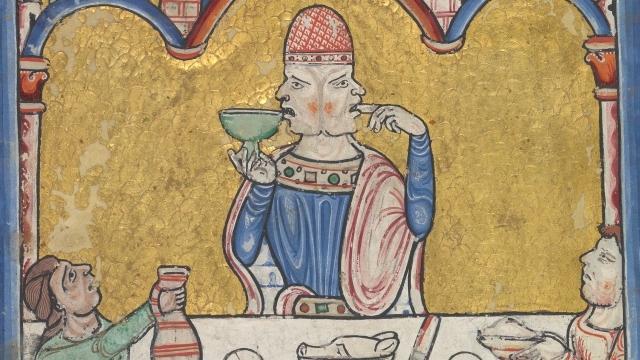
Calendar, January, a two-faced man dining, c.1185. Psalter of Eleanor of Aquitaine, KB 76 F 13, folium 001v, Koninklijke Bibliotheek.
The image above depicts the god Janus with his two faces, looking backwards and forwards, towards the past and the future simultaneously: a graphic and symbolic image of the permanence of the classic. What is a classic in historical writing? How do we explain the continued interest in certain historical texts, even when their accounts and interpretations of particular periods have been displaced or revised by newer generations of historians? How do these texts help to maintain the historiographical canon? Jaume Aurell's innovative study ranges from the heroic writings of ancient Greek historians such as Herodotus to the twentieth century microhistories of Carlo Ginzburg. In this masterclass he will discuss themes from his recently published book What is a Classic in History?: The Making of a Historical Canon, which explores how certain texts have been able to stand the test of time, gain their status as historiographical classics, and capture the imaginations of readers across generations. Investigating the processes of permanence and change in both historiography and history, that is the creation of historical genres and canons.
Jaume Aurell is Professor at the Department of History at the University of Navarra, Spain. His main subjects of research are medieval and modern historiography, historians' autobiographies, and medieval coronations. He is a member of the Research Group 'Religion and Civil Society' at the ICS (University of Navarra). His publications include Authoring the Past: History, Autobiography, and Politics in Medieval Catalonia (University of Chicago Press, 2012), Theoretical Perspectives on Historians’ Autobiographies: From Documentation to Intervention (Routledge, 2016), Medieval Self-Coronations: The History and Symbolism of a Ritual (Cambridge University Press, 2020), and most recently What is a Classic in History?: The Making of a Historical Canon (Cambridge University Press, 2024).
Location
Speakers
- Professor Jaume Aurell
Contact
- Professor Melanie Nolan
